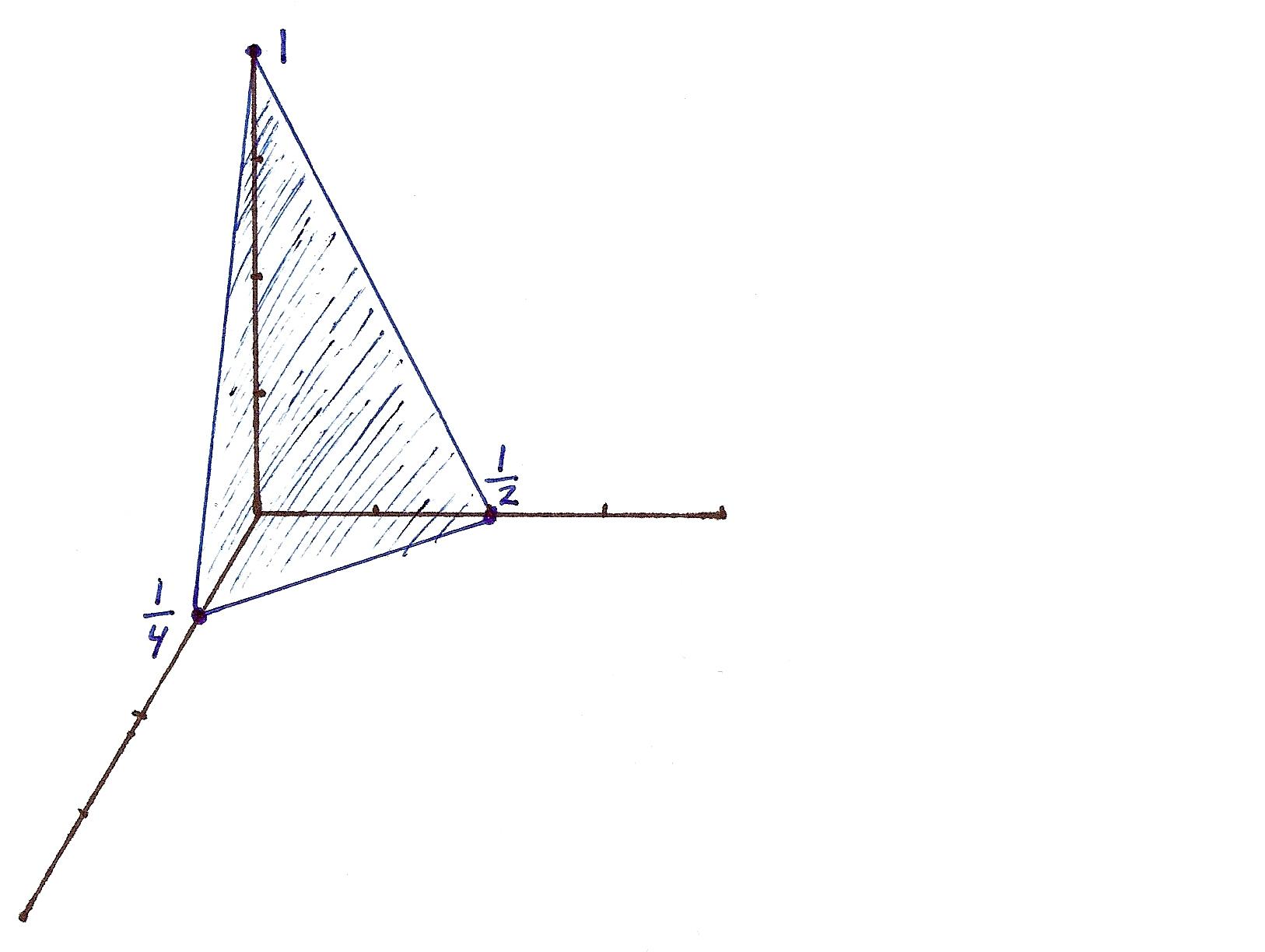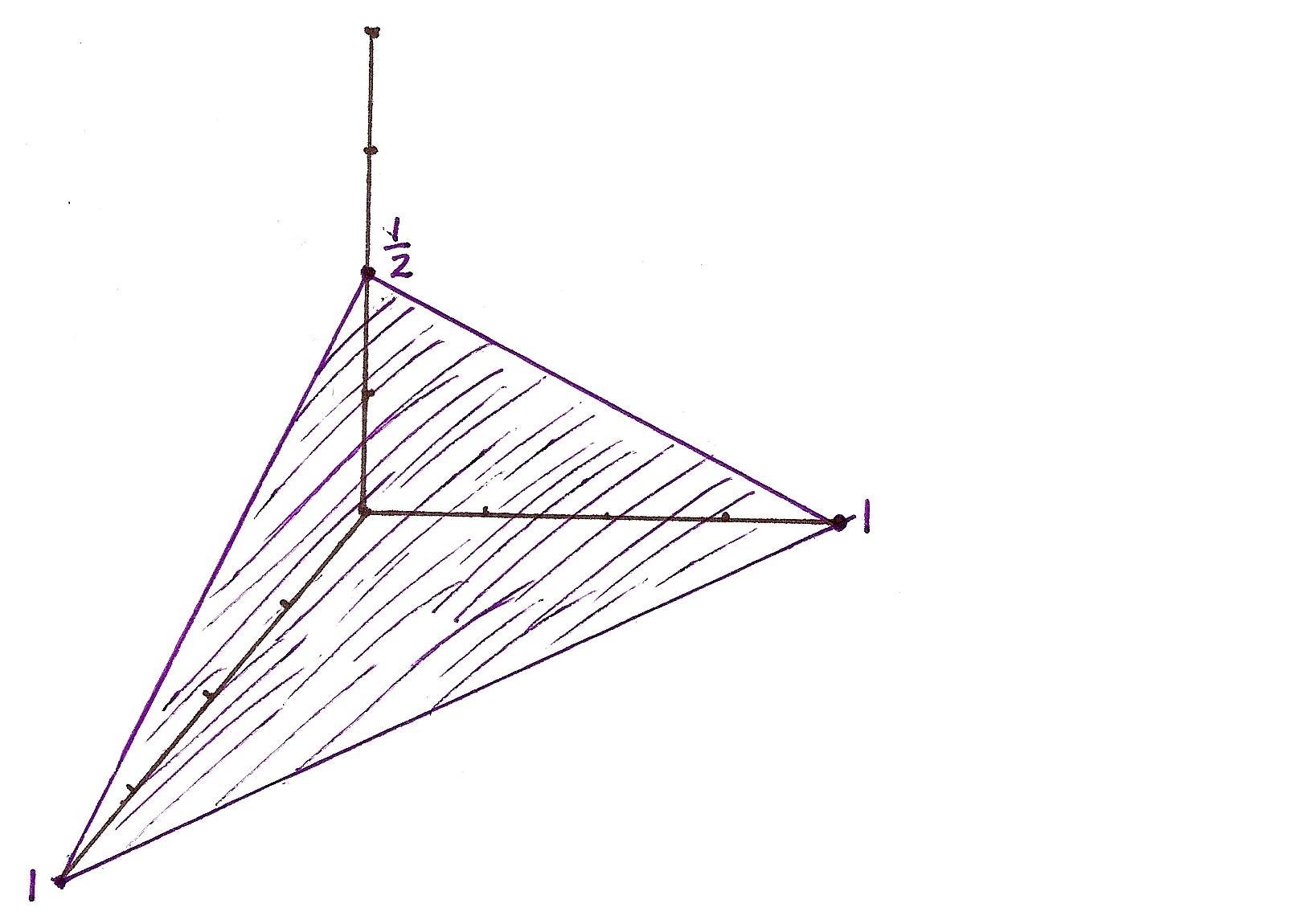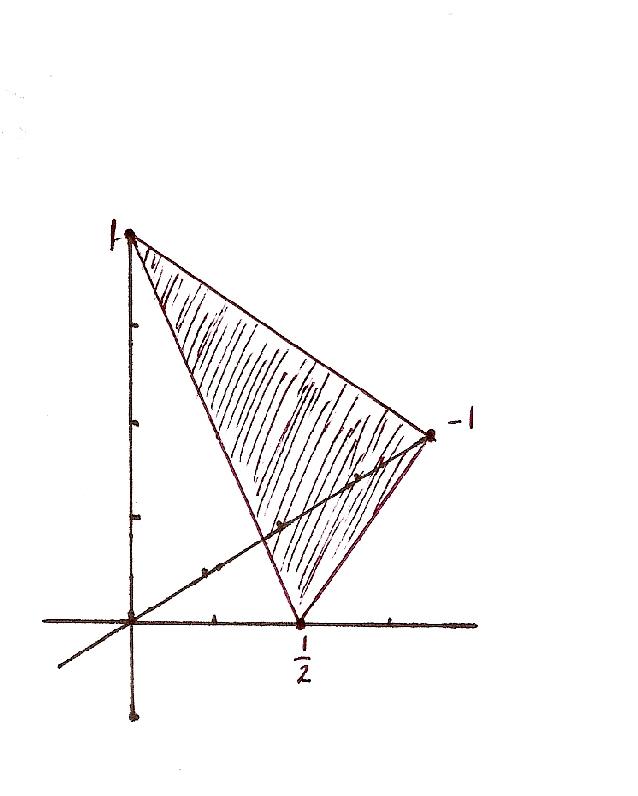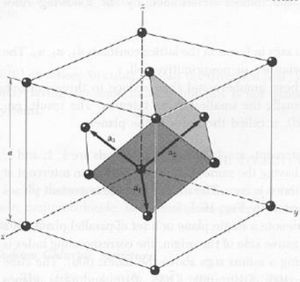Solution to Set 4: Difference between revisions
HollyBrown (talk | contribs) |
HollyBrown (talk | contribs) |
||
| Line 37: | Line 37: | ||
For the Miller indicies (1-10) the x, y, and z intercepts are respectively | For the Miller indicies (1-10) the x, y, and z intercepts are respectively __________. | ||
| Line 45: | Line 45: | ||
For the Miller indicies (-121) the x, y, and z intercepts are respectively (-1, 1/2, 1). This gives rise to the graph | For the Miller indicies (-121) the x, y, and z intercepts are respectively (-1, 1/2, 1). This gives rise to the graph | ||
[[Image:Miller_Indicies_4.jpg]] | |||
==Problem 3== | ==Problem 3== | ||
Revision as of 20:35, 19 March 2009
Problem 1
Cu, density , atomic mass , fcc structure
a. In , the number of moles is
b. Atoms in
c. Since the bonds between the atoms are small compared to the diameter of the atom, we neglect the bonds for an estimate. The structure is fcc and the length of each side of the cube is , where r is the radius of one Cu atom.
d. Atomic radius
, where
e. Mass of 1 atom
Problem 2
Draw the planes whose Miller indices are (421), (112), (1-10) and (-121). State their intercepts on the x- y- and z- axes.
For the Miller indicies (421) the x, y, and z intercepts are respectively (1/4, 1/2, 1). This gives rise to the graph

For the Miller indicies (1-10) the x, y, and z intercepts are respectively __________.
For the Miller indicies (112) the x, y, and z intercepts are respectively (1, 1, 1/2). This gives rise to the graph

For the Miller indicies (-121) the x, y, and z intercepts are respectively (-1, 1/2, 1). This gives rise to the graph

Problem 3
a. fcc and primitive cell
b.
The volume of the primitive cell is the volume of the fcc cell.
c. There are 4 atoms in the fcc cell and 6 in the primitive cell. There are 6 because there is 1 atom per vertex in the primitive cell while the fcc cell has 2 atoms per vertex and one additional atom per face.













